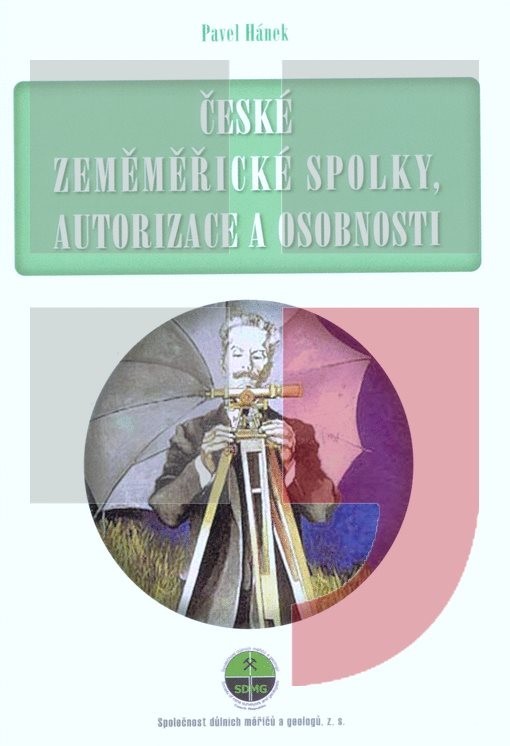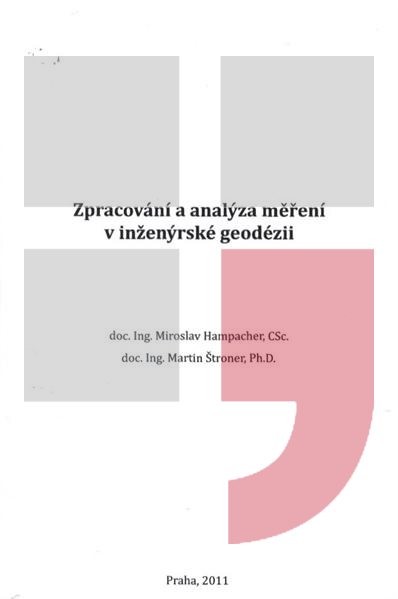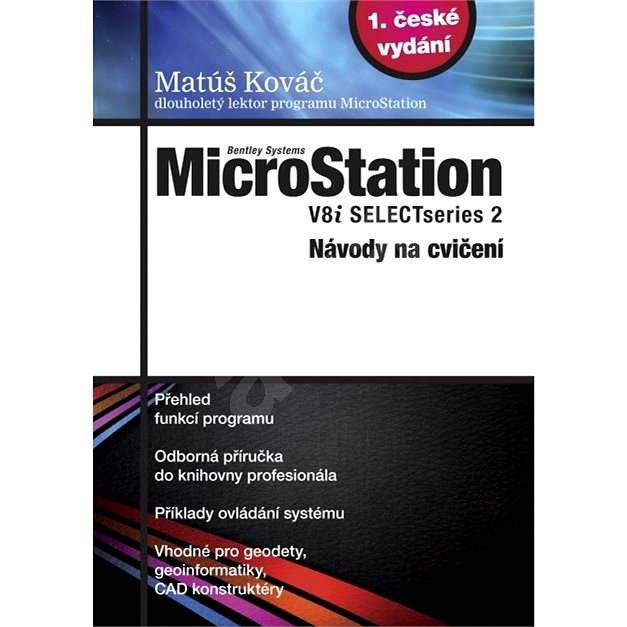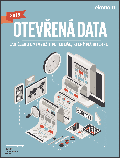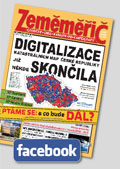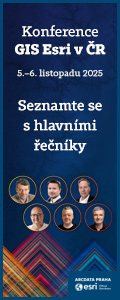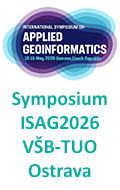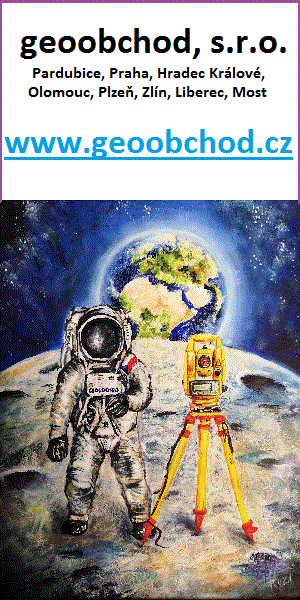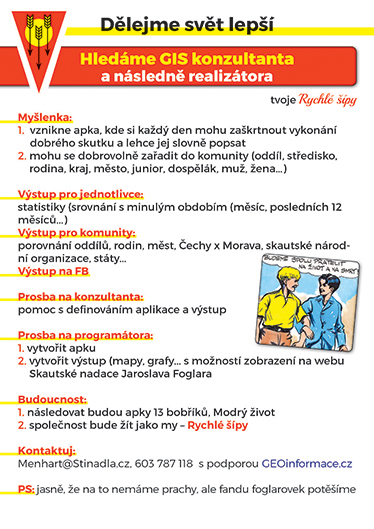zprávy
zdroje zpráv:Využití dat ze ZÚR - Dopravní a technická infrastruktura a logistika
8.8.2016 2:00 Cenia - Katalog metadat ČR - INSPIRE 4_1_1_Silniční dopravní infrastruktura4_1_2_Železniční dopravní infrastruktura4_1_3_Letecká dopravní infrastruktura4_1_4_Vodní dopravní infrastruktura4_1_5_Ostatní dopravní infrastruktura4_3_1_Elektrické sítě, zásobování plynem a teplem4_3_2_Vodovody a kanalizaceKatastrální mapa - rastrová
8.8.2016 2:00 Cenia - Katalog metadat ČR - INSPIRE Katastrální mapa je závazným státním mapovým dílem velkého měřítka, obsahuje body polohového bodového pole, polohopis a popis. Katastrální mapa v rastrové podobě je poskytována za úplatu a obsahuje analogovou mapu s kompletní kresbou. Analogová mapa pokrývá 11,00 % území České republiky, což je 8 673,06km2. Více katastrální vyhláška č.357/2013 Sb. v platném znění.Využití dat ze ZÚR - Dopravní a technická infrastruktura a logistika - bod
8.8.2016 2:00 Cenia - Katalog metadat ČR - INSPIRE 4_3_4_Ostatní technická infrastrukturaKatastrální mapa - vektorová
8.8.2016 2:00 Cenia - Katalog metadat ČR - INSPIRE Katastrální mapa je závazným státním mapovým dílem velkého měřítka, obsahuje body polohového bodového pole, polohopis a popis. Katastrální mapa ve vektorové podobě je poskytována zdarma ve formátu DGN a obsahuje prvky Digitální katastrální mapy (DKM) a Katastrální mapy digitalizované (KMD), tedy bodová pole, budovy, další prvky mapy, hranice parcel, katastrální hranice, parcely katastru nemovitostí, prvky orientační mapy a hranice věcného břemene. Z důvodu použití formátu DGN produkt neobsahuje značky na liniích a oblouky jsou nahrazeny lomenými čárami. U vztažného bodu popisných textů a parcelních čísel dochází k posunu o vzdálenost mezi vztažným bodem textu a bodem ve středu popisného textu. Katastrální mapa ve vektorové podobě k 08. 08. 2016 pokrývá 84,80% území České republiky, t.j. 66 879,96km2. Více katastrální vyhláška č.357/2013 Sb. v platném znění.Aaron Newman – In Memoriam
7.8.2016 22:50 Carlson Software The entire Carlson Software family mourns the loss of Carlson Regional Sales Director Aaron Newman of Fayetteville, Arkansas, who passed away unexpectedly on August 5. Aaron will be greatly missed at Carlson for his enthusiasm, good spirit, conviviality, and work ethic. We send our sincere condolences to his wife, Renee (Miller) Newman, his two sons, Dakota Chase Newman and Dalton Wayne Newman, […]Aaron Newman – In Memoriam
7.8.2016 22:50 Carlson Software The entire Carlson Software family mourns the loss of Carlson Regional Sales Director Aaron Newman of Fayetteville, Arkansas, who passed away unexpectedly on August 5. Aaron will be greatly missed at Carlson for his enthusiasm, good spirit, conviviality, and work ethic. We send our sincere condolences to his wife, Renee (Miller) Newman, his two sons, Dakota Chase Newman and Dalton Wayne Newman, […]Austrálie, země měřičům zaslíbená
6.8.2016 19:37 Blogující geomatici - FAV ZČU http://m.navigovat.mobilmania.cz/australie-ma-problem-kontinent-cestuje-prilis-rychle-a-system-gps-neni-presny/a-1335210/?showforum=1Odborný referent v odd. dokumentace KN KP Jičín
5.8.2016 17:45 ČÚZK /Urady/Katastralni-urady/Katastralni-urady/Katastralni-urad-pro-Kralovehradecky-kraj/Uredni-deska/Oznameni-a-jina-uredni-sdeleni/Volna-mista/odborny-referent-v-odd-dokumentace-KN-KP-JicinOdborný referent v oddělení dokumentace katastru nemovitostí Katastrálního pracoviště Jičín
5.8.2016 17:45 ČÚZK /Urady/Katastralni-urady/Katastralni-urady/Katastralni-urad-pro-Kralovehradecky-kraj/Uredni-deska/Oznameni-a-jina-uredni-sdeleni/Volna-mista/odborny-referent-v-odd-dokumentace-KN-KP-JicinOdborný referent v oddělení dokumentace katastru nemovitostí Katastrálního pracoviště Jičín
5.8.2016 17:45 ČÚZK - volná místa Katastrální úřad pro Královéhradecký kraj, Katastrální pracoviště Jičín vypisuje výběrové řízení na místo Odborný referent v oddělení dokumentace katastru nemovitostí Katastrálního pracoviště JičínOdborný referent v odd. dokumentace KN KP Jičín
5.8.2016 17:45 ČÚZK - volná místa Katastrální úřad pro Královéhradecký kraj, Katastrální pracoviště Jičín vypisuje výběrové řízení na místo Odborný referent v odd. dokumentace KN KP JičínOdborný referent v oddělení dokumentace katastru nemovitostí Katastrálního pracoviště Jičín
5.8.2016 17:45 ČÚZK - předpisy a opatření Katastrální úřad pro Královéhradecký kraj Katastrální pracoviště Jičínvypisuje výběrové řízení na místo
Odborný referent v oddělení dokumentace katastru nemovitostí Katastrálního pracoviště Jičín
Odborný referent v odd. dokumentace KN KP Jičín
5.8.2016 17:45 ČÚZK - předpisy a opatření Katastrální úřad pro Královéhradecký kraj Katastrální pracoviště Jičínvypisuje výběrové řízení na místo
Odborný referent v odd. dokumentace KN KP Jičín
Lokalizace pro ArcGIS 10.4.1
5.8.2016 13:15 ARCDATAČeská lokalizace pro ArcGIS 10.4.1 je zákazníkům s platnou maintenance k dispozici v sekci lokalizace. Jednotlivé lokalizační balíčky si můžete stáhnout rovněž zde:
Heslo ke stažení souboru obdrželi zákazníci s platnou maintenance e-mailem. Před instalací si vždy prosím přečtěte návod, který je součástí ZIP archivu.
V Geoportálu ÚAP Ústeckého kra
5.8.2016 12:00 Ústecký kraj V Geoportálu ÚAP Ústeckého kraje byla provedena aktualizace údajů pro poskytovatele ČEZ Distribuce a.s. – jev 72, 73, ČEZ ICT Services a.s. – jev 82 a ČEPS a.s. – jev 72, 7320160805-Oznámení odborný rada oddělení aktualizace katastru nemovitostí KP Příbram
5.8.2016 11:04 ČÚZK /Urady/Katastralni-urady/Katastralni-urady/Katastralni-urad-pro-Stredocesky-kraj/Katastralni-pracoviste/KP-Pribram/O-uradu/Aktuality/20160805-Oznameni-odborny-rada-oddeleni-aktualizac20160805-Oznámení odborný rada oddělení aktualizace katastru nemovitostí KP Příbram
5.8.2016 11:04 ČÚZK - předpisy a opatření Na úřední elektronické desce Katastrálního úřadu pro Středočeský kraj, v sekci "Oznámení a jiná úřední sdělení" bylo vystaveno "Oznámení o vyhlášení výběrového řízení na služební místo Odborný rada oddělení aktualizace katastru nemovitostí Katastrálního pracoviště Příbram"20160805-Odborný rada oddělení aktualizace katastru nemovitostí Katastrálního pracoviště Příbram
5.8.2016 11:01 ČÚZK - předpisy a opatření V části "Úřední deska", v sekci "Oznámení a jiná úřední sdělení" bylo vystaveno "Oznámení o vyhlášení výběrového řízení na služební místo Odborný rada oddělení aktualizace katastru nemovitostí Katastrálního pracoviště Příbram"20160805-Odborný rada oddělení aktualizace katastru nemovitostí Katastrálního pracoviště Příbram
5.8.2016 11:01 ČÚZK /Urady/Katastralni-urady/Katastralni-urady/Katastralni-urad-pro-Stredocesky-kraj/O-uradu/Aktuality/20160805-Odborny-rada-oddeleni-aktualizace-katastrOdborný rada oddělení aktualizace katastru nemovitostí
5.8.2016 10:58 ČÚZK - volná místa Katastrální úřad pro Středočeský kraj, Katastrální pracoviště Příbram vypisuje výběrové řízení na místo Odborný rada oddělení aktualizace katastru nemovitostíOdborný rada oddělení aktualizace katastru nemovitostí
5.8.2016 10:58 ČÚZK - předpisy a opatření Katastrální úřad pro Středočeský kraj Katastrální pracoviště Příbramvypisuje výběrové řízení na místo odborný rada oddělení aktualizace katastru nemovitostí
Odborný rada oddělení aktualizace katastru nemovitostí
Odborný rada oddělení aktualizace katastru nemovitostí
5.8.2016 10:58 ČÚZK /Urady/Katastralni-urady/Katastralni-urady/Katastralni-urad-pro-Stredocesky-kraj/Uredni-deska/Oznameni-a-jina-uredni-sdeleni/Volna-mista/Odborny-rada-oddeleni-aktualizace-katastru-nemovitNová verze FME 2016
4.8.2016 12:45 CSmap V lednu byla společností Safe Software představena nová verze programu FME® 2016. Ta se navíc na přelomu března a dubna dočkala významné aktualizace na verzi 2016.1. Přinášíme vám přehled nejdůležitějších novinek.Byla přidána skupina nových funkcí na práci s atributy. Už je také možné kdykoliv během převodu zapisovat data na disk bez čekání na konec převodu. Práce s SQL dotazy a daty v XML je díky úpravám funkcí mnohem snadnější. Proměnami prošlo také uživatelské prostředí programu FME Server.
Co vše vidí družice?
4.8.2016 8:58 ARCDATA
The ArcGIS Imagery Book, kterou vydalo nakladatelství Esri Press.
Jedná se o poutavý úvod do problematiky družicových a leteckých dat, včetně těch pořízených prostřednictvím dronů. Kniha je koncipována jako interaktivní učebnice – k dispozici je nejen v tištěné formě, ale i jako PDF propojené s videoukázkami a mapovými aplikacemi.
Chcete se podívat, jak vypadají snímky pořízené družicí Sentinel? Seznamte se s ní prostřednictvím aplikace Sentinel ve webových mapách.
20160803-Oznámení na pozici odborný referent oddělení dokumentace katastru nemovitostí Katastrálního
3.8.2016 14:19 ČÚZK - předpisy a opatření Na úřední elektronické desce Katastrálního úřadu pro Středočeský kraj, v sekci "Oznámení a jiná úřední sdělení" bylo vystaveno "Oznámení o vyhlášení výběrového řízení na služební místo odborný referent oddělení dokumentace katastru nemovitostí Katastrálního pracoviště Mladá Boleslav"20160803-Oznámení na pozici odborný referent oddělení dokumentace katastru nemovitostí Katastrálního
3.8.2016 14:19 ČÚZK /Urady/Katastralni-urady/Katastralni-urady/Katastralni-urad-pro-Stredocesky-kraj/Katastralni-pracoviste/KP-Mlada-Boleslav/O-uradu/Aktuality/20160803-Oznameni-na-pozici-odborny-referent-oddel20160803-odborný referent oddělení dokumentace katastru nemovitostí KP Mladá Boleslav
3.8.2016 14:04 ČÚZK - předpisy a opatření V části "Úřední deska", v sekci "Oznámení a jiná úřední sdělení" bylo vystaveno "Odborný referent oddělení dokumentace katastru nemovitostí Katastrálního pracoviště Mladá Boleslav"20160803-odborný referent oddělení dokumentace katastru nemovitostí KP Mladá Boleslav
3.8.2016 14:04 ČÚZK /Urady/Katastralni-urady/Katastralni-urady/Katastralni-urad-pro-Stredocesky-kraj/O-uradu/Aktuality/20160803-odborny-referent-oddeleni-dokumentace-kat20160803-odborný referent oddělení dokumentace katastru nemovitostí KP Mladá Boleslav
3.8.2016 14:04 ČÚZK - předpisy a opatření V části "Úřední deska", v sekci "Oznámení a jiná úřední sdělení" bylo vystaveno "Oznámení o vyhlášení výběrového řízení na služební místo odborný referent oddělení dokumentace katastru nemovitostí Katastrálního pracoviště Mladá Boleslav"Odborný referent oddělení dokumentace katastru nemovitostí
3.8.2016 13:58 ČÚZK - volná místa Katastrální úřad pro Středočeský kraj, Katastrální pracoviště Mladá Boleslav vypisuje výběrové řízení na místo Odborný referent oddělení dokumentace katastru nemovitostíOdborný referent oddělení dokumentace katastru nemovitostí
3.8.2016 13:58 ČÚZK /Urady/Katastralni-urady/Katastralni-urady/Katastralni-urad-pro-Stredocesky-kraj/Uredni-deska/Oznameni-a-jina-uredni-sdeleni/Volna-mista/Odborny-referent-oddeleni-dokumentace-katastru-nemOdborný referent oddělení dokumentace katastru nemovitostí
3.8.2016 13:58 ČÚZK - předpisy a opatření Katastrální úřad pro Středočeský kraj Katastrální pracoviště Mladá Boleslavvypisuje výběrové řízení na místo odborný referent oddělení dokumentace katastru nemovitostí
Odborný referent oddělení dokumentace katastru nemovitostí
Přerušení provozu
3.8.2016 13:45 ČÚZK - předpisy a opatření KATASTRÁLNÍ ÚŘAD PRO JIHOMORAVSKÝ KRAJ,KATASTRÁLNÍ PRACOVIŠTĚ HODONÍN
695 00 Hodonín, Dobrovolského 255
oznamuje, že v úterý 9.8.2016 bude z důvodu opravy el.rozvodů
od 14:00 uzavřeno.
( od 10.8. bude obvyklý provoz )
Přerušení provozu
3.8.2016 13:45 ČÚZK /Urady/Katastralni-urady/Katastralni-urady/Katastralni-urad-pro-Jihomoravsky-kraj/Katastralni-pracoviste/KP-Hodonin/O-uradu/Aktuality/Preruseni-provozu-(1)Prague Hacks 2016: Registrujte se na třetí ročník největšího hackathonu o pražských datech
3.8.2016 11:00 Otevřená data Fond Otakara Motejla ve spolupráci s Node5, reSITE a StartupYardem organizují další ročník hackathonu Prague Hacks, tentokrát s podtitulem Put Open Data in Motion, and Improve Life in Prague. Ve dnech 30. září až 2. října se v Node5 sejdou vývojáři, urbanisti a datoví analytici všech pohlaví, kteří budou v týmech pracovat na aplikacích postavených na otevřených datech, aby představili život v Praze v novém světle. Zájemci o účast se můžou předběžně přihlásit zde.Prague Hacks 2016: Registrujte se na třetí ročník největšího hackathonu o pražských datech
3.8.2016 11:00 Otevřená data Fond Otakara Motejla ve spolupráci s Node5, reSITE a StartupYardem organizují další ročník hackathonu Prague Hacks, tentokrát s podtitulem Put Open Data in Motion, and Improve Life in Prague. Ve dnech 30. září až 2. října se v Node5 sejdou vývojáři, urbanisti a datoví analytici všech pohlaví, kteří budou v týmech pracovat na aplikacích postavených na otevřených datech, aby představili život v Praze v novém světle. Zájemci o účast se můžou předběžně přihlásit zde.Vrchní referent/rada (informatik) Katastrálního pracoviště Most na Katastrálním úřadu pro Ústecký kr
3.8.2016 10:36 ČÚZK - volná místa Katastrální úřad pro Ústecký kraj, Katastrální pracoviště Most vypisuje výběrové řízení na místo Vrchní referent/rada (informatik) Katastrálního pracoviště Most na Katastrálním úřadu pro Ústecký krVrchní referent/rada (informatik) Katastrálního pracoviště Most na Katastrálním úřadu pro Ústecký kr
3.8.2016 10:36 ČÚZK - předpisy a opatření Katastrální úřad pro Ústecký kraj Katastrální pracoviště Mostvypisuje výběrové řízení na místo
Vrchní referent/rada (informatik) Katastrálního pracoviště Most na Katastrálním úřadu pro Ústecký kraj
Vrchní referent/rada (informatik) Katastrálního pracoviště Most na Katastrálním úřadu pro Ústecký kr
3.8.2016 10:36 ČÚZK /Urady/Katastralni-urady/Katastralni-urady/Katastralni-urad-pro-Ustecky-kraj/Uredni-deska/Oznameni-a-jina-uredni-sdeleni/Volna-mista/Vrchni-referent-rada-(informatik)-Katastralniho-prPřístroj pro sledování větru Aladin je připraven na misi Aeolus
3.8.2016 9:37 Český Kosmický PortálTrvalo to dlouhé roky, ale jedna z nejkomplikovanějších kdy vyvinutých kosmických technologií je konečně připravena k připojení na svoji mateřskou družici, aby se na její palubě vydala před koncem příštího roku do vesmíru. Díky tomuto mezníku jsme opět o něco blíže lepšímu pochopení fungování proudění větrů na Zemi.
Jak najít "geo-job"?
3.8.2016 9:15 Blogující geomatici - FAV ZČU Právě jste absolvovali geomatiku? Nebo už vás nebaví současná práce? Uvažujete o tom, zkusit to v zahraničí? Možná vás zaujme návod, jak najít "geo-job" (ze serveru Digital Geography).20160803-změny v INSPIRE datových sadách
3.8.2016 7:46 ČÚZK - předpisy a opatření Podrobný popis změn a vzorové soubory INSPIRE GML 4.0, které nahrazují stávající soubory od 1.10.2016 více ...20160803-změny v INSPIRE datových sadách
3.8.2016 7:46 ČÚZK /Aktuality-resort/2016/20160803-zmeny-v-INSPIRE-datovych-sadach20160803-změny v INSPIRE datových sadách
3.8.2016 7:46 ČÚZK /Aktuality-resort/20160803-zmeny-v-INSPIRE-datovych-sadach20160803-změny v INSPIRE datových sadách
3.8.2016 7:46 ČÚZK - předpisy a opatření Podrobný popis změn a vzorové soubory INSPIRE GML 4.0, které nahrazují stávající soubory od 1.10.2016 více ...Aplikace Dej Tip - nová generace
3.8.2016 7:00 Česká asociace pro geoinformace Nová generace mobilní aplikace Dej Tip, kterou vyvíjí kolektivní člen CAGI, společnost GEFOS, je na světě! Aplikace je určena pro platformu Android a slouží ke hlášení závad ve vybraných městech a obcích, ale i na krajských komunikacích. Aplikaci je možné si stáhnout na GooglePrague Hacks 2016
3.8.2016 7:00 Česká asociace pro geoinformaceVšichni zájemci o účast se můžou registrovat na stránkách hackathonu www.praguehacks.cz. Vzhledem k omezené kapacitě prostoru Vám bude potvrzení účasti zasláno po 11. září, kdy se registrace uzavře.
Pracovním jazykem akce je angličtina.
Kdy se potkáme? 30.9. - 2.10.2016
Kde se potkáme? Node5, Radlická 180/50, 150 00 Praha 5
Účastnicky poplatek: 250 Kč (k
Novela katastrální vyhláky, geometrické plány, dohled ZKI
3.8.2016 1:08 Zeměměřič ČSGK a KÚ pro Pardubický kraj vás zvou na odborný seminář do Pardubic - 22. září 2016.Státní pozemkový úřad úspěšně spolupracuje s obcemi na řešení ochrany před povodněmi
3.8.2016 0:00 Státní pozemkový úřadAladin wind probe ready for Aeolus
2.8.2016 16:30 ESA Observing the Earth
It has been years in the making, but one of the trickiest pieces of space technology ever developed is finally ready to join its satellite for launch by the end of next year. With this milestone, we are another step closer to a better understanding of Earth’s winds.
vrchní referent/rada v oddělení aktualizace KN na KP Hodonín
2.8.2016 11:53 ČÚZK /Urady/Katastralni-urady/Katastralni-urady/Katastralni-urad-pro-Jihomoravsky-kraj/Uredni-deska/Oznameni-a-jina-uredni-sdeleni/Volna-mista/vrchni-referent-rada-v-oddeleni-aktualizace-KN-navrchní referent/rada v oddělení aktualizace KN na KP Hodonín
2.8.2016 11:53 ČÚZK - volná místa Katastrální úřad pro Jihomoravský kraj, Katastrální pracoviště Hodonín vypisuje výběrové řízení na místo vrchní referent/rada v oddělení aktualizace KN na KP Hodonínvrchní referent/rada v oddělení aktualizace KN na KP Hodonín
2.8.2016 11:53 ČÚZK - předpisy a opatření Katastrální úřad pro Jihomoravský kraj Katastrální pracoviště Hodonínvypisuje výběrové řízení na místo
vrchní referent/rada v oddělení aktualizace KN na KP Hodonín
Debata ESA s občany
2.8.2016 10:29 Česká kosmická kancelářDne 10. září 2016 se ve všech členských státech ESA uskuteční první Debata občanů o přínosech, směřování a roli Evropy v kosmických aktivitách. ESA organizuje veřejnou debatu ojedinělou metodou, při které se z každého členského státu zúčastní přibližně 100 občanů, kteří budou diskutovat současně ve stejný den stejné otázky.
Natáčeli jsme závody lodí na Vltavě ze Slap do Prahy
2.8.2016 9:55 UpVision O víkendu jsme natáčeli závody lodí různých kategorií na Vltavě ze Slap na okraj Prahy.Několik fotek zde:
https://plus.google.com/+UpvisionCz1/posts/5n7QR1LJj1Q
Vrchní referent/rada – vedení katastrální mapy Katastrálního pracoviště Tábor
2.8.2016 6:32 ČÚZK - volná místa Katastrální úřad pro Jihočeský kraj, Katastrální pracoviště Tábor vypisuje výběrové řízení na místo Vrchní referent/rada – vedení katastrální mapy Katastrálního pracoviště TáborVrchní referent/rada – vedení katastrální mapy Katastrálního pracoviště Tábor
2.8.2016 6:32 ČÚZK /Urady/Katastralni-urady/Katastralni-urady/Katastralni-urad-pro-Jihocesky-kraj/Uredni-deska/Oznameni-a-jina-uredni-sdeleni/Volna-mista/Vrchni-referent-rada-–-vedeni-katastralni-mapy-KatVrchní referent/rada – vedení katastrální mapy Katastrálního pracoviště Tábor
2.8.2016 6:32 ČÚZK - předpisy a opatření Katastrální úřad pro Jihočeský kraj Katastrální pracoviště Táborvypisuje výběrové řízení na místo
Vrchní referent/rada – vedení katastrální mapy Katastrálního pracoviště Tábor
Památné stromy
2.8.2016 2:00 Cenia - Katalog metadat ČR - INSPIRE Lokalizace objektů vyhlášených památných stromů (jednotlivý strom, stromořadí, skupina stromů); vrstva obsahuje složené prvky (Multipart Features); © AOPK ČR, 2016INSPIRE téma Parcely (CP)
2.8.2016 2:00 Cenia - Katalog metadat ČR - INSPIRE Data odpovídají směrnici INSPIRE pro téma katastrální parcely (CP). Vychází z katastrální mapy, která je závazným státním mapovým dílem velkého měřítka, obsahuje body polohového bodového pole, polohopis a popis a může mít formu digitální mapy, analogové mapy nebo digitalizované mapy. Data publikovaná v rámci INSPIRE obsahují pouze katastrální území (pro celou Českou Republiku) a parcely a jejich hranice z území, kde je digitální mapa (k 01. 08. 2016 je to 84,75% území České republiky, t.j. 66 837,78km2). Více katastrální zákon 256/2013 Sb., katastrální vyhláška č.357/2013 Sb. v platném znění a INSPIRE Data Specification on Cadastral Parcels v 3.0.1.Smluvně chráněná území
2.8.2016 2:00 Cenia - Katalog metadat ČR - INSPIRE Hranice území chráněných formou smlouvy s vlastníkem jako alternativní možnost ochrany evropsky významných lokalit případně i dalších území (stromy, návrhy ZCHÚ); vrstva obsahuje složené prvky (Multipart Features); © AOPK ČR, 2016INSPIRE téma Budovy (BU)
2.8.2016 2:00 Cenia - Katalog metadat ČR - INSPIRE Data odpovídají směrnici INSPIRE pro téma budovy (BU). Data pochází částečně z projektu RÚIAN (Registr územní identifikace, adres a nemovitostí), který je součástí základních registrů České Republiky a obsahuje informace o územní identifikaci, adresách a nemovitostech, a částečně z ISKN (Informační systém katastru nemovistostí). Zdrojem informací o budovách v ISKN je objekt Stavba, v RÚIAN je to Stavební objekt. Většina Staveb je zároveň Stavebními objekty, ale jsou případy, kdy tomu tak není. Kromě Budov datová sada obsahuje i části budov, které jsou pro potřeby INSPIRE vyjádřeny vchody z RÚIAN. Vchody obsahují informace o počtu podlaží, technickoekonomických atributech apod. Datová sada pokrývá celé území české republiky. V datové sadě není uvedeno 2,13%, t.j. 89595 budov (k 01. 08. 2016), protože neobsahují definiční bod ani polygon. Více v zákoně č. 111/2009 Sb., o základních registrech, ve vyhlášce č. 359/2011 Sb., o základním registru územní identifikace, adres a nemovitostí v platných zněních, v zákoně 256/2013 Sb., o katastru nemovitostí, v katastrální vyhlášce č. 357/2013 Sb. v platném znění a INSPIRE Data Specification on Buildings v 3.0 z 13.12.2013.INSPIRE téma Adresy (AD)
2.8.2016 2:00 Cenia - Katalog metadat ČR - INSPIRE Data odpovídají směrnici INSPIRE pro téma adresy (AD). Vychází především z projektu RÚIAN (Registr územní identifikace, adres a nemovitostí), který je součástí základních registrů České Republiky a obsahuje informace o územní identifikaci, adresách a nemovitostech. Data publikovaná v rámci INSPIRE obsahují pouze adresní místa a jejich komponenty, kterými jsou stát, obec, část obce, městský obvod v Praze (MOP), městký obvod/městská část (MO/MČ), ulice a pošta a to na území celé České Republiky. Obsahují rozvněž geometrii, která určuje definiční bod adresního místa. V datové sadě nění uvedeno 2,62%, t.j. 75907 adresních míst (k 01. 08. 2016), protože neobsahují definiční bod, podle kterého by je bylo možné prostorově určit. Více v zákoně č. 111/2009 Sb., o základních registrech a ve vyhlášce č. 359/2011 Sb., o základním registru územní identifikace, adres a nemovitostí v platných zněních a INSPIRE Data Specification on Addresses v 3.0.1 z 26.4.2010.Výňatky z Informací Odboru metodiky a řízení pozemkových úprav
1.8.2016 19:07 Asociace poskytovatelů služeb v pozemkových úpravách Obsah Výňatků z Informace OMŘPÚ č. 3/2016 vydané Odborem metodiky a řízení pozemkových úprav Státního pozemkového úřadu dne 18. 7. 2016 pod č.j. SPU 359703/2016: 1. Novela zákona č. 139/2002 Sb. 2. Upozornění na nesrovnalost v textu kap. 10.1 MN 3. Právo stavby – § 1240 a násl. NOZ Přílohy Poslední aktualizace Výňatky z Informace…PRACOVNÍK SKENOVÁNÍ 2
1.8.2016 17:17 ČÚZK /Urady/Katastralni-urady/Katastralni-urady/Katastralni-urad-pro-hlavni-mesto-Prahu/O-uradu/Aktuality/PRACOVNIK-SKENOVANI-2PRACOVNÍK SKENOVÁNÍ 2
1.8.2016 17:17 ČÚZK - předpisy a opatření Přijímací řízení na pracovní pozi : PRACOVNÍK SKENOVÁNPÍPRACOVNÍK SKENOVÁNÍ 2
1.8.2016 17:17 ČÚZK - předpisy a opatření Přijímací řízení na pracovní pozici: Pracovník skenováníPRACOVNÍK SKENOVÁNÍ 2
1.8.2016 17:17 ČÚZK - předpisy a opatření Přijímací řízení na pracovní pozici: Pracovník skenováníOznámení o vyhlášení výběrového řízení 3
1.8.2016 16:52 ČÚZK - předpisy a opatření Oznámení o vyhlášení výběrového řízení na služební místoodborný rada – oddělení právních vztahů k nemovitostem,
Katastrální pracoviště Sokolov, Katastrální úřad pro Karlovarský kraj
Dokument: ZDE
Oznámení o vyhlášení výběrového řízení 3
1.8.2016 16:52 ČÚZK - předpisy a opatření Oznámení o vyhlášení výběrového řízení na služební místoodborný referent – oddělení dokumentace katastru nemovitostí
Katastrální pracoviště Sokolov, Katastrální úřad pro Karlovarský kraj
Dokument: ZDE
Oznámení o vyhlášení výběrového řízení 3
1.8.2016 16:52 ČÚZK /Urady/Katastralni-urady/Katastralni-urady/Katastralni-urad-pro-Karlovarsky-kraj/Katastralni-pracoviste/KP-Sokolov/O-uradu/Aktuality/Oznameni-o-vyhlaseni-vyberoveho-rizeni-3PRACOVNÍK SKENOVÁNÍ
1.8.2016 16:52 ČÚZK - předpisy a opatření Přijímací řízení na pracovní pozi : PRACOVNÍK SKENOVÁNPÍPracovník skenování
1.8.2016 16:46 ČÚZK - volná místa Katastrální úřad pro hlavní město Prahu, Katastrální pracoviště Praha vypisuje výběrové řízení na místo Pracovník skenováníPRACOVNÍK SKENOVÁNÍ
1.8.2016 16:46 ČÚZK - volná místa Katastrální úřad pro hlavní město Prahu, Katastrální pracoviště Praha vypisuje výběrové řízení na místo PRACOVNÍK SKENOVÁNÍPRACOVNÍK SKENOVÁNÍ
1.8.2016 16:46 ČÚZK - předpisy a opatření Katastrální úřad pro hlavní město Prahu Katastrální pracoviště Prahavypisuje výběrové řízení na místo: Pracovník skenování
PRACOVNÍK SKENOVÁNÍ
Pracovník skenování
1.8.2016 16:46 ČÚZK - předpisy a opatření Katastrální úřad pro hlavní město Prahu Katastrální pracoviště Prahavypisuje výběrové řízení na místo: Pracovník skenování
Pracovník skenování
PRACOVNÍK SKENOVÁNÍ
1.8.2016 16:46 ČÚZK /Urady/Katastralni-urady/Katastralni-urady/Katastralni-urad-pro-hlavni-mesto-Prahu/Volna-mista/PRACOVNIK-SKENOVANIPracovník skenování
1.8.2016 16:46 ČÚZK /Urady/Katastralni-urady/Katastralni-urady/Katastralni-urad-pro-hlavni-mesto-Prahu/Volna-mista/PRACOVNIK-SKENOVANIDruhý díl seriálu Face of Analytics
1.8.2016 14:38 ARCDATASeriál Face of Analytics nabízí videosemináře vedené analytiky různých společností, kteří využívají software Esri.
Druhý díl se uskuteční ve středu 10. srpna a seznámí vás s GIS v Unique Digital. Tato společnost se zabývá zpracováním a vizualizací obchodních dat a její specialista na data vás spolu se zástupcem Esri UK provedou možnostmi analýz a zobrazení obchodních dat, vyhledáváním trendů, vzorů chování a možnostmi optimalizace obchodních řešení.
Zúčastnit se můžete zcela zdarma, stačí se jen registrovat. Seminář začíná v 15.00 ve středu 10. srpna.
Zpřístupnění datových sad služby Copernicus pro monitorování území
1.8.2016 14:24 CENIA - národní geoportál INSPIRE V rámci optimalizace mapových služeb poskytovaných Národnim geoportálem INSPIRE byla vytvořena nová mapová služba "Služby Copernicus pro monitorování území", jejíž součástí jsou jsou datové sady ze Služby Copernicus pro monitorování území - CORINE Land Cover 1990, 2000, 2006 a změnové vrstvy, High resolution Layers, Mapa osídlení, Riparian Zones (břehové oblasti), Natura 2000 - krajinný...GSA accepts Loyola de Palacio facility – home of the GSC in Madrid
1.8.2016 13:22 European GNSS Agency
The European GNSS Agency (GSA) has formally accepted the new Loyola de Palacio facility, which houses the European GNSS Service Centre (GSC), from the Spanish government – a key milestone towards the declaration of Galileo Initial Services.
Recently, the European GNSS Agency (GSA) formally accepted the new Loyola de Palacio facility, which houses the European GNSS Service Centre (GSC), from the Spanish government. This handover represents a significant milestone in the development of the Galileo programme and its service provisions, which is scheduled to begin later this year with the declaration of Initial Services.
“The GSC is a key asset for the Galileo programme; it is Galileo's door to the GNSS world,” said GSA Executive Director Carlo des Dorides. “Today, the GSA is pleased to accept this excellent facility from Spain. It is a symbol of the upcoming service phase and the single, unique interface for Galileo users.”
“Carlo des Dorides has been on board the Galileo programme from the beginning. He has played a consistent role in taking the programme forward, and his re-election as GSA Executive Director by unanimity was not by chance,” added Spanish Secretary General for Transport, Carmen Librero Pintado. “Rest assured, Spain will always be side-by-side with you.”
Ignacio Azqueta Ortiz, Director General of Spain’s National Institute for Aerospace Technology (INTA) said, “With this handover and the milestones to be reached in the near future, we look forward to continuing our tradition of collaboration with the GSA and working together towards the success of the Galileo programme.”
In his concluding remarks, Spanish Secretary of Defence Pedro Arguelles Salaverria underlined, “Now more than ever, Europe must show the world its strengths, and Galileo is one of them. Spain underlines its strong support of Europe and Galileo.”
The essential role of the GSC
By delegation from the European Commission, the GSA is charged with overseeing the operation and service provision for both the European Geostationary Navigation Overlay Service (EGNOS) (since 2015) and Galileo (as of 2017), along with managing the security accreditation and general security provision for both programmes. The GSA has been fully responsible for the GSC since its inception in 2014, a responsibility that includes serving as the GSC design authority, managing the GSC nucleus’ (GSC-n) operations and overseeing preparation contracts on infrastructure, operations and hosting service provision for the fully-fledged GSC (v1).
Ignacio Azqueta Ortiz, Director General of INTA, Carmen Librero Pintado, Secretary General for Transport, Pedro Argüelles Salaverría, Secretary of State for Defence, Carlo des Dorides, Executive Director, European GNSS Agency (GSA), Begoña Cristeto, Secretary General of Industry (click to enlarge)
Under the hosting agreement between the European Commission and Spain, INTA served as the hosting entity, with the Spanish government providing the site as an in-kind contribution. The GSC offers over 1,100 square metres of space, is home to some of the programme’s most state-of-the-art technology, and employees over 40 people
Since 2013, the GSC-n has been providing limited services and working as a precursor to GSC v1. Its key work includes supporting the lead up to the Galileo Initial Services provision, along with operating the GSC Helpdesk, disseminating orbital products to the Search and Rescue (SAR) community, supporting GNSS-related R&D and industry and monitoring user satisfaction. Once operational, GSC v1 will be connected to the Galileo core system, thus enabling the Commercial Service. It is expected to enter operations by mid-2017.
A truly European agency
The GSA is unique in that is one of the EU’s only multi-site agencies. With its headquarters in Prague, it also will run operational sites in the Netherlands, France, and the UK. With the handover of the Loyola de Palacio facility, it now adds Spain to this list. Each of the sites has its own specific function and will be staffed by specialists from the GSA and its contractors. Once the Galileo Operations Contract is awarded and Initial Services officially declared, the GSC is expected to see an increase in staff.
The site acceptance meeting was attended by representatives from the Spanish departments of defence, transport and industry, among others. Attendees were also given an overview presentation on the GSC’s role within the Galileo programme, along with a tour of the facilities.
Media note: This feature can be republished without charge provided the European GNSS Agency (GSA) is acknowledged as the source at the top or the bottom of the story. You must request permission before you use any of the photographs on the site. If you republish, we would be grateful if you could link back to the GSA website (http://www.gsa.europa.eu).
GSA accepts Loyola de Palacio facility – home of the GSC in Madrid
1.8.2016 13:22 European GNSS Agency
The European GNSS Agency (GSA) has formally accepted the new Loyola de Palacio facility, which houses the European GNSS Service Centre (GSC), from the Spanish government – a key milestone towards the declaration of Galileo Initial Services.
Recently, the European GNSS Agency (GSA) formally accepted the new Loyola de Palacio facility, which houses the European GNSS Service Centre (GSC), from the Spanish government. This handover represents a significant milestone in the development of the Galileo programme and its service provisions, which is scheduled to begin later this year with the declaration of Initial Services.
“The GSC is a key asset for the Galileo programme; it is Galileo's door to the GNSS world,” said GSA Executive Director Carlo des Dorides. “Today, the GSA is pleased to accept this excellent facility from Spain. It is a symbol of the upcoming service phase and the single, unique interface for Galileo users.”
“Carlo des Dorides has been on board the Galileo programme from the beginning. He has played a consistent role in taking the programme forward, and his re-election as GSA Executive Director by unanimity was not by chance,” added Spanish Secretary General for Transport, Carmen Librero Pintado. “Rest assured, Spain will always be side-by-side with you.”
Ignacio Azqueta Ortiz, Director General of Spain’s National Institute for Aerospace Technology (INTA) said, “With this handover and the milestones to be reached in the near future, we look forward to continuing our tradition of collaboration with the GSA and working together towards the success of the Galileo programme.”
In his concluding remarks, Spanish Secretary of Defence Pedro Arguelles Salaverria underlined, “Now more than ever, Europe must show the world its strengths, and Galileo is one of them. Spain underlines its strong support of Europe and Galileo.”
The essential role of the GSC
By delegation from the European Commission, the GSA is charged with overseeing the operation and service provision for both the European Geostationary Navigation Overlay Service (EGNOS) (since 2015) and Galileo (as of 2017), along with managing the security accreditation and general security provision for both programmes. The GSA has been fully responsible for the GSC since its inception in 2014, a responsibility that includes serving as the GSC design authority, managing the GSC nucleus’ (GSC-n) operations and overseeing preparation contracts on infrastructure, operations and hosting service provision for the fully-fledged GSC (v1).
Ignacio Azqueta Ortiz, Director General of INTA, Carmen Librero Pintado, Secretary General for Transport, Pedro Argüelles Salaverría, Secretary of State for Defence, Carlo des Dorides, Executive Director, European GNSS Agency (GSA), Begoña Cristeto, Secretary General of Industry (click to enlarge)
Under the hosting agreement between the European Commission and Spain, INTA served as the hosting entity, with the Spanish government providing the site as an in-kind contribution. The GSC offers over 1,100 square metres of space, is home to some of the programme’s most state-of-the-art technology, and employees over 40 people
Since 2013, the GSC-n has been providing limited services and working as a precursor to GSC v1. Its key work includes supporting the lead up to the Galileo Initial Services provision, along with operating the GSC Helpdesk, disseminating orbital products to the Search and Rescue (SAR) community, supporting GNSS-related R&D and industry and monitoring user satisfaction. Once operational, GSC v1 will be connected to the Galileo core system, thus enabling the Commercial Service. It is expected to enter operations by mid-2017.
A truly European agency
The GSA is unique in that is one of the EU’s only multi-site agencies. With its headquarters in Prague, it also will run operational sites in the Netherlands, France, and the UK. With the handover of the Loyola de Palacio facility, it now adds Spain to this list. Each of the sites has its own specific function and will be staffed by specialists from the GSA and its contractors. Once the Galileo Operations Contract is awarded and Initial Services officially declared, the GSC is expected to see an increase in staff.
The site acceptance meeting was attended by representatives from the Spanish departments of defence, transport and industry, among others. Attendees were also given an overview presentation on the GSC’s role within the Galileo programme, along with a tour of the facilities.
Media note: This feature can be republished without charge provided the European GNSS Agency (GSA) is acknowledged as the source at the top or the bottom of the story. You must request permission before you use any of the photographs on the site. If you republish, we would be grateful if you could link back to the GSA website (http://www.gsa.europa.eu).
GSA accepts Loyola de Palacio facility – home of the GSC in Madrid
1.8.2016 13:22 European GNSS Agency
The European GNSS Agency (GSA) has formally accepted the new Loyola de Palacio facility, which houses the European GNSS Service Centre (GSC), from the Spanish government – a key milestone towards the declaration of Galileo Initial Services.
Recently, the European GNSS Agency (GSA) formally accepted the new Loyola de Palacio facility, which houses the European GNSS Service Centre (GSC), from the Spanish government. This handover represents a significant milestone in the development of the Galileo programme and its service provisions, which is scheduled to begin later this year with the declaration of Initial Services.
“The GSC is a key asset for the Galileo programme; it is Galileo's door to the GNSS world,” said GSA Executive Director Carlo des Dorides. “Today, the GSA is pleased to accept this excellent facility from Spain. It is a symbol of the upcoming service phase and the single, unique interface for Galileo users.”
“Carlo des Dorides has been on board the Galileo programme from the beginning. He has played a consistent role in taking the programme forward, and his re-election as GSA Executive Director by unanimity was not by chance,” added Spanish Secretary General for Transport, Carmen Librero Pintado. “Rest assured, Spain will always be side-by-side with you.”
Ignacio Azqueta Ortiz, Director General of Spain’s National Institute for Aerospace Technology (INTA) said, “With this handover and the milestones to be reached in the near future, we look forward to continuing our tradition of collaboration with the GSA and working together towards the success of the Galileo programme.”
In his concluding remarks, Spanish Secretary of Defence Pedro Arguelles Salaverria underlined, “Now more than ever, Europe must show the world its strengths, and Galileo is one of them. Spain underlines its strong support of Europe and Galileo.”
The essential role of the GSC
By delegation from the European Commission, the GSA is charged with overseeing the operation and service provision for both the European Geostationary Navigation Overlay Service (EGNOS) (since 2015) and Galileo (as of 2017), along with managing the security accreditation and general security provision for both programmes. The GSA has been fully responsible for the GSC since its inception in 2014, a responsibility that includes serving as the GSC design authority, managing the GSC nucleus’ (GSC-n) operations and overseeing preparation contracts on infrastructure, operations and hosting service provision for the fully-fledged GSC (v1).
Ignacio Azqueta Ortiz, Director General of INTA, Carmen Librero Pintado, Secretary General for Transport, Pedro Argüelles Salaverría, Secretary of State for Defence, Carlo des Dorides, Executive Director, European GNSS Agency (GSA), Begoña Cristeto, Secretary General of Industry (click to enlarge)
Under the hosting agreement between the European Commission and Spain, INTA served as the hosting entity, with the Spanish government providing the site as an in-kind contribution. The GSC offers over 1,100 square metres of space, is home to some of the programme’s most state-of-the-art technology, and employees over 40 people
Since 2013, the GSC-n has been providing limited services and working as a precursor to GSC v1. Its key work includes supporting the lead up to the Galileo Initial Services provision, along with operating the GSC Helpdesk, disseminating orbital products to the Search and Rescue (SAR) community, supporting GNSS-related R&D and industry and monitoring user satisfaction. Once operational, GSC v1 will be connected to the Galileo core system, thus enabling the Commercial Service. It is expected to enter operations by mid-2017.
A truly European agency
The GSA is unique in that is one of the EU’s only multi-site agencies. With its headquarters in Prague, it also will run operational sites in the Netherlands, France, and the UK. With the handover of the Loyola de Palacio facility, it now adds Spain to this list. Each of the sites has its own specific function and will be staffed by specialists from the GSA and its contractors. Once the Galileo Operations Contract is awarded and Initial Services officially declared, the GSC is expected to see an increase in staff.
The site acceptance meeting was attended by representatives from the Spanish departments of defence, transport and industry, among others. Attendees were also given an overview presentation on the GSC’s role within the Galileo programme, along with a tour of the facilities.
Media note: This feature can be republished without charge provided the European GNSS Agency (GSA) is acknowledged as the source at the top or the bottom of the story. You must request permission before you use any of the photographs on the site. If you republish, we would be grateful if you could link back to the GSA website (http://www.gsa.europa.eu).
GSA accepts Loyola de Palacio facility – home of the GSC in Madrid
1.8.2016 13:22 European GNSS Agency
The European GNSS Agency (GSA) has formally accepted the new Loyola de Palacio facility, which houses the European GNSS Service Centre (GSC), from the Spanish government – a key milestone towards the declaration of Galileo Initial Services.
Recently, the European GNSS Agency (GSA) formally accepted the new Loyola de Palacio facility, which houses the European GNSS Service Centre (GSC), from the Spanish government. This handover represents a significant milestone in the development of the Galileo programme and its service provisions, which is scheduled to begin later this year with the declaration of Initial Services.
“The GSC is a key asset for the Galileo programme; it is Galileo's door to the GNSS world,” said GSA Executive Director Carlo des Dorides. “Today, the GSA is pleased to accept this excellent facility from Spain. It is a symbol of the upcoming service phase and the single, unique interface for Galileo users.”
“Carlo des Dorides has been on board the Galileo programme from the beginning. He has played a consistent role in taking the programme forward, and his re-election as GSA Executive Director by unanimity was not by chance,” added Spanish Secretary General for Transport, Carmen Librero Pintado. “Rest assured, Spain will always be side-by-side with you.”
Ignacio Azqueta Ortiz, Director General of Spain’s National Institute for Aerospace Technology (INTA) said, “With this handover and the milestones to be reached in the near future, we look forward to continuing our tradition of collaboration with the GSA and working together towards the success of the Galileo programme.”
In his concluding remarks, Spanish Secretary of Defence Pedro Arguelles Salaverria underlined, “Now more than ever, Europe must show the world its strengths, and Galileo is one of them. Spain underlines its strong support of Europe and Galileo.”
The essential role of the GSC
By delegation from the European Commission, the GSA is charged with overseeing the operation and service provision for both the European Geostationary Navigation Overlay Service (EGNOS) (since 2015) and Galileo (as of 2017), along with managing the security accreditation and general security provision for both programmes. The GSA has been fully responsible for the GSC since its inception in 2014, a responsibility that includes serving as the GSC design authority, managing the GSC nucleus’ (GSC-n) operations and overseeing preparation contracts on infrastructure, operations and hosting service provision for the fully-fledged GSC (v1).
Ignacio Azqueta Ortiz, Director General of INTA, Carmen Librero Pintado, Secretary General for Transport, Pedro Argüelles Salaverría, Secretary of State for Defence, Carlo des Dorides, Executive Director, European GNSS Agency (GSA), Begoña Cristeto, Secretary General of Industry (click to enlarge)
Under the hosting agreement between the European Commission and Spain, INTA served as the hosting entity, with the Spanish government providing the site as an in-kind contribution. The GSC offers over 1,100 square metres of space, is home to some of the programme’s most state-of-the-art technology, and employees over 40 people
Since 2013, the GSC-n has been providing limited services and working as a precursor to GSC v1. Its key work includes supporting the lead up to the Galileo Initial Services provision, along with operating the GSC Helpdesk, disseminating orbital products to the Search and Rescue (SAR) community, supporting GNSS-related R&D and industry and monitoring user satisfaction. Once operational, GSC v1 will be connected to the Galileo core system, thus enabling the Commercial Service. It is expected to enter operations by mid-2017.
A truly European agency
The GSA is unique in that is one of the EU’s only multi-site agencies. With its headquarters in Prague, it also will run operational sites in the Netherlands, France, and the UK. With the handover of the Loyola de Palacio facility, it now adds Spain to this list. Each of the sites has its own specific function and will be staffed by specialists from the GSA and its contractors. Once the Galileo Operations Contract is awarded and Initial Services officially declared, the GSC is expected to see an increase in staff.
The site acceptance meeting was attended by representatives from the Spanish departments of defence, transport and industry, among others. Attendees were also given an overview presentation on the GSC’s role within the Galileo programme, along with a tour of the facilities.
Media note: This feature can be republished without charge provided the European GNSS Agency (GSA) is acknowledged as the source at the top or the bottom of the story. You must request permission before you use any of the photographs on the site. If you republish, we would be grateful if you could link back to the GSA website (http://www.gsa.europa.eu).
Uzavření pozemkové knihy
1.8.2016 13:18 ČÚZK /Urady/Katastralni-urady/Katastralni-urady/Katastralni-urad-pro-Stredocesky-kraj/Katastralni-pracoviste/KP-Kutna-Hora/O-uradu/Aktuality/Uzavreni-pozemkove-knihyUzavření pozemkové knihy
1.8.2016 13:18 ČÚZK - předpisy a opatřeníV období od 01.08.2016 do 12.08.2016 je Pozemková kniha na adrese Kutná Hora, Kremnická 6/115 uzavřena. Objednávky jsou přijímány na adrese Rudní 432/4, 284 01 Kutná Hora.
Dnes byla provedena v Geoportá
1.8.2016 12:00 Ústecký kraj Dnes byla provedena v Geoportálu ÚAP Ústeckého kraje aktualizace údajů pro poskytovatele Agentura ochrany přírody a krajiny České republiky – jev 32, 34Pronajměte si kus Katastrálního úřadu v Brně
1.8.2016 11:08 Zeměměřič KP zveřejnil výzvu k podání nabídky na nájem části budovy na Moravském náměstí v Brně.Better together
1.8.2016 10:41 European GNSS Agency
The European GNSS Agency (GSA) highlights how the combination of GNSS and Earth observation services mean increased benefits for geospatial applications.
As part of its recent annual congress, the International Society for Photogrammetry and Remote Sensing (ISPRS) held a special session on Galileo and Copernicus and their role in geospatial land applications. The session, jointly organised by the European GNSS Agency (GSA), the European Environmental Agency (EEA) and the Horizon 2020 funded LARA project, drew over 70 participants.
A common theme of the session was a general need for a stronger connection between GNSS-generated geospatial data and remote sensing applications and services, including its relevant stakeholders. To demonstrate why, presenters emphasised the added value that geolocation and earth observation services offer when they work together.
Also read: Galileo and EGNOS benefiting the Geospatial World
“The successful launch of Sentinel-2, along with Earth observation’s increasing capacity to use Very High Resolution sensors, are providing a boost to the European remote sensing industry,” said EEA Project Manager of Copernicus Land Services Hans Dufourmont. “The combination of precision geolocation services with satellite imagery at sub-metre pixel sizes paves the way for a new range of uses and in domains as diverse as precision farming, ecosystem service monitoring and urban growth monitoring – to name only a few.”
“Galileo’s improved signal robustness and varying levels of authentication, along with the Commercial Service’s high-accuracy receiver error below one decimetre, are all features that will greatly benefit geospatial users,” added GSA Executive Director Carlo des Dorides. “With virtually all professional surveying receivers preparing for the declaration of Galileo Initial Services later this year, geospatial users are increasingly able to benefit from European GNSS.”
Multiplying benefits
Galileo, Europe’s own global navigation satellite system, provides a global positioning service under civilian control. Offering dual frequencies as its standard, Galileo’s open service will deliver improved real-time positioning accuracy, in combination with already existing GNSS constellations. Copernicus, Europe’s Earth observation system, consists of a complex set of systems that collect data from the Sentinel satellites and other sources. It bundles these data and provides users with reliable and up-to-date information through a set of services related to environmental and security issues.
Though there is already a wealth of applications for both European systems, their open data policies will enable the creation of new services and applications and, as a result, new business creation. Galileo determines a precise position anytime and anywhere on the globe, while Copernicus provides information on the Earth’s surface, its atmosphere and marine systems. The joint use of both systems in applications will unleash synergies and result in multiple benefits for the users.
Media note: This feature can be republished without charge provided the European GNSS Agency (GSA) is acknowledged as the source at the top or the bottom of the story. You must request permission before you use any of the photographs on the site. If you republish, we would be grateful if you could link back to the GSA website (http://www.gsa.europa.eu).
Better together
1.8.2016 10:41 European GNSS Agency
The European GNSS Agency (GSA) highlights how the combination of GNSS and Earth observation services mean increased benefits for geospatial applications.
As part of its recent annual congress, the International Society for Photogrammetry and Remote Sensing (ISPRS) held a special session on Galileo and Copernicus and their role in geospatial land applications. The session, jointly organised by the European GNSS Agency (GSA), the European Environmental Agency (EEA) and the Horizon 2020 funded LARA project, drew over 70 participants.
A common theme of the session was a general need for a stronger connection between GNSS-generated geospatial data and remote sensing applications and services, including its relevant stakeholders. To demonstrate why, presenters emphasised the added value that geolocation and earth observation services offer when they work together.
Also read: Galileo and EGNOS benefiting the Geospatial World
“The successful launch of Sentinel-2, along with Earth observation’s increasing capacity to use Very High Resolution sensors, are providing a boost to the European remote sensing industry,” said EEA Project Manager of Copernicus Land Services Hans Dufourmont. “The combination of precision geolocation services with satellite imagery at sub-metre pixel sizes paves the way for a new range of uses and in domains as diverse as precision farming, ecosystem service monitoring and urban growth monitoring – to name only a few.”
“Galileo’s improved signal robustness and varying levels of authentication, along with the Commercial Service’s high-accuracy receiver error below one decimetre, are all features that will greatly benefit geospatial users,” added GSA Executive Director Carlo des Dorides. “With virtually all professional surveying receivers preparing for the declaration of Galileo Initial Services later this year, geospatial users are increasingly able to benefit from European GNSS.”
Multiplying benefits
Galileo, Europe’s own global navigation satellite system, provides a global positioning service under civilian control. Offering dual frequencies as its standard, Galileo’s open service will deliver improved real-time positioning accuracy, in combination with already existing GNSS constellations. Copernicus, Europe’s Earth observation system, consists of a complex set of systems that collect data from the Sentinel satellites and other sources. It bundles these data and provides users with reliable and up-to-date information through a set of services related to environmental and security issues.
Though there is already a wealth of applications for both European systems, their open data policies will enable the creation of new services and applications and, as a result, new business creation. Galileo determines a precise position anytime and anywhere on the globe, while Copernicus provides information on the Earth’s surface, its atmosphere and marine systems. The joint use of both systems in applications will unleash synergies and result in multiple benefits for the users.
Media note: This feature can be republished without charge provided the European GNSS Agency (GSA) is acknowledged as the source at the top or the bottom of the story. You must request permission before you use any of the photographs on the site. If you republish, we would be grateful if you could link back to the GSA website (http://www.gsa.europa.eu).
Better together
1.8.2016 10:41 European GNSS Agency
The European GNSS Agency (GSA) highlights how the combination of GNSS and Earth observation services mean increased benefits for geospatial applications.
As part of its recent annual congress, the International Society for Photogrammetry and Remote Sensing (ISPRS) held a special session on Galileo and Copernicus and their role in geospatial land applications. The session, jointly organised by the European GNSS Agency (GSA), the European Environmental Agency (EEA) and the Horizon 2020 funded LARA project, drew over 70 participants.
A common theme of the session was a general need for a stronger connection between GNSS-generated geospatial data and remote sensing applications and services, including its relevant stakeholders. To demonstrate why, presenters emphasised the added value that geolocation and earth observation services offer when they work together.
Also read: Galileo and EGNOS benefiting the Geospatial World
“The successful launch of Sentinel-2, along with Earth observation’s increasing capacity to use Very High Resolution sensors, are providing a boost to the European remote sensing industry,” said EEA Project Manager of Copernicus Land Services Hans Dufourmont. “The combination of precision geolocation services with satellite imagery at sub-metre pixel sizes paves the way for a new range of uses and in domains as diverse as precision farming, ecosystem service monitoring and urban growth monitoring – to name only a few.”
“Galileo’s improved signal robustness and varying levels of authentication, along with the Commercial Service’s high-accuracy receiver error below one decimetre, are all features that will greatly benefit geospatial users,” added GSA Executive Director Carlo des Dorides. “With virtually all professional surveying receivers preparing for the declaration of Galileo Initial Services later this year, geospatial users are increasingly able to benefit from European GNSS.”
Multiplying benefits
Galileo, Europe’s own global navigation satellite system, provides a global positioning service under civilian control. Offering dual frequencies as its standard, Galileo’s open service will deliver improved real-time positioning accuracy, in combination with already existing GNSS constellations. Copernicus, Europe’s Earth observation system, consists of a complex set of systems that collect data from the Sentinel satellites and other sources. It bundles these data and provides users with reliable and up-to-date information through a set of services related to environmental and security issues.
Though there is already a wealth of applications for both European systems, their open data policies will enable the creation of new services and applications and, as a result, new business creation. Galileo determines a precise position anytime and anywhere on the globe, while Copernicus provides information on the Earth’s surface, its atmosphere and marine systems. The joint use of both systems in applications will unleash synergies and result in multiple benefits for the users.
Media note: This feature can be republished without charge provided the European GNSS Agency (GSA) is acknowledged as the source at the top or the bottom of the story. You must request permission before you use any of the photographs on the site. If you republish, we would be grateful if you could link back to the GSA website (http://www.gsa.europa.eu).
Geograf (1)
1.8.2016 9:04 Zeměměřický úřad Zeměměřický úřadvypisuje výběrové řízení na místo
Geograf
Geograf (1)
1.8.2016 9:04 ČÚZK - volná místa Zeměměřický úřad, vypisuje výběrové řízení na místo Geograf (1)Geograf (1)
1.8.2016 9:04 ČÚZK - předpisy a opatření Zeměměřický úřadvypisuje výběrové řízení na místo
Geograf
Geograf (1)
1.8.2016 9:04 ČÚZK /Urady/Zememericky-urad/Uredni-deska/Oznameni-a-jina-uredni-sdeleni/Volna-mista/Geograf-(1)Výstava Zajímavá místa České republiky na produktech Zeměměřického úřadu
1.8.2016 8:38 Zeměměřický úřad Výstava Zajímavá místa České republiky na produktech Zeměměřického úřadu, která se konala v budově zeměměřických a katastrálních úřadů, byla již ukončena. Nyní je možno navštívit ji virtuálně zde.Výstava Zajímavá místa České republiky na produktech Zeměměřického úřadu
1.8.2016 8:38 ČÚZK - předpisy a opatření Výstava Zajímavá místa České republiky na produktech Zeměměřického úřadu, která se konala v budově zeměměřických a katastrálních úřadů, byla již ukončena. Nyní je možno navštívit ji virtuálně zde.Výstava Zajímavá místa České republiky na produktech Zeměměřického úřadu
1.8.2016 8:38 ČÚZK /Urady/Zememericky-urad/O-uradu/Aktuality/Vystava-Zajimava-mista-Ceske-republiky-na-produkteOdborný rada - Oddělení právních vztahů k nemovitostem
1.8.2016 8:27 ČÚZK - předpisy a opatření Katastrální úřad pro Karlovarský kraj Katastrální pracoviště Sokolovvypisuje výběrové řízení na místo
Odborný rada - Oddělení právních vztahů k nemovitostem
Odborný rada - Oddělení právních vztahů k nemovitostem
1.8.2016 8:27 ČÚZK /Urady/Katastralni-urady/Katastralni-urady/Katastralni-urad-pro-Karlovarsky-kraj/Uredni-deska/Oznameni-a-jina-uredni-sdeleni/Volna-mista/Odborny-rada-Oddeleni-pravnich-vztahu-k-nemovi-(1)Odborný rada - Oddělení právních vztahů k nemovitostem
1.8.2016 8:27 ČÚZK - volná místa Katastrální úřad pro Karlovarský kraj, Katastrální pracoviště Sokolov vypisuje výběrové řízení na místo Odborný rada - Oddělení právních vztahů k nemovitostemKolik atomových bomb u explodovalo na Zemi?
1.8.2016 7:07 Zeměměřič Zajímavá mapa tě přesvědčí, e víc, ne si myslíVolné místo - specialista rozvoje kosmických aktivit
1.8.2016 7:00 Česká asociace pro geoinformace Ministerstvo dopravy vyhlašuje výběrové řízení na služební místo ministerského rady v Oddělení kosmických technologií a aplikací.Zajímají Vás kosmické technologie, máte alespoň základní povědomí o rozvoji obecných technologií, inkubaci podnikatelských nápadů, problematiky transferu technologií a souvisejících nástrojích podpory?
Náplň pracovní
CORINE Land Cover - Plochy umělých povrchů a jejich změny mezi roky 1990 a 2000
1.8.2016 2:00 Cenia - Katalog metadat ČR - INSPIRE Kompozice obsahuje vrstvy ploch stálých kultur z roku 2000 a vrstvy přírůstků a úbytků ploch.CORINE Land Cover - Plochy stálých kultur a jejich změny mezi roky 1990 a 2000
1.8.2016 2:00 Cenia - Katalog metadat ČR - INSPIRE Kompozice obsahuje vrstvy ploch stálých kultur z roku 2000 a vrstvy přírůstků a úbytků ploch.CORINE Land Cover - Plochy luk a pastvin a jejich změny mezi roky 1990 a 2000
1.8.2016 2:00 Cenia - Katalog metadat ČR - INSPIRE Kompozice obsahuje vrstvy ploch luk a pastvin z roku 2000 a vrstvy přírůstků a úbytků ploch.CORINE Land Cover - Plochy orné půdy a jejich změny mezi roky 1990 a 2000
1.8.2016 2:00 Cenia - Katalog metadat ČR - INSPIRE Kompozice obsahuje vrstvy ploch orné půdy z roku 2000 a vrstvy přírůstků a úbytků ploch.Služby Copernicus pro monitorování území
1.8.2016 2:00 Cenia - Katalog metadat ČR - INSPIRE Mapová služba zobrazuje data ze Služby Copernicus pro monitorování území, které jsou vytvářeny na podkladě družicových dat i pozemních měřeních (tzv. in-situ data). Všechny základní Služby Copernicus jsou poskytovány zdarma a každou službu či její část koordinuje příslušná pověřená organizace pod dohledem Evropské komise. Služba Copernicus pro monitorování území (Copernicus Land Monitoring Service) poskytuje geografické informace o krajinném pokryvu a jeho změnách ve vztahu například ke stavu vegetace nebo koloběhu vody. Využití těchto informací je pak možné v širokém spektru aplikací, jako je územní plánování, lesní hospodářství, vodní hospodářství, zemědělství a zajištění potravin, apod.Ve službě jsou zahrnuta data z lokální komponenty (Natura 2000 - krajinný pokryv, Riparian Zones, Urban Atlas) a panevropské komponenty (CORINE Land Cover, High Resolution Layers, Mapa osídlení).CORINE Land Cover - Lesní plochy a jejich změny mezi roky 1990 a 2000
1.8.2016 2:00 Cenia - Katalog metadat ČR - INSPIRE Kompozice obsahuje vrstvy lesních ploch z roku 2000 a vrstvy přírůstků a úbytků ploch.CORINE Land Cover - Různorodé zemědělské plochy a jejich změny mezi roky 1990 a 2000
1.8.2016 2:00 Cenia - Katalog metadat ČR - INSPIRE Kompozice obsahuje vrstvy zemědělských ploch z roku 2000 a vrstvy přírůstků a úbytků ploch.Státní pozemkový úřad rozšiřuje nabídku pozemků pro restituenty
1.8.2016 0:00 Státní pozemkový úřad Praha, 1. srpna 2016 – V souvislosti s novelou zákona o Státním pozemkovém úřadu, která vstupuje v účinnost dne 1. srpna 2016, dochází ke změnám ve vyhlášených veřejných nabídkách pozemků. Nabídka pro zemědělce vyhlášená na 7. listopadu 2016 se ruší a k tomuto termínu bude vyhlášena letošní čtvrtá nabídka určená pro restituenty (oprávněné osoby).Referent/referentka, Krajský pozemkový úřad pro Jihomoravský kraj
1.8.2016 0:00 Státní pozemkový úřad Státní pozemkový úřad přijme zaměstnance na pozici referent/referentka, Krajský pozemkový úřad pro Jihomoravský kraj.Ve všech mapových službách byl
30.7.2016 12:00 Plzeňský kraj Ve všech mapových službách byla provedena aktualizace vektorových katastrálních map (DKM, KMD, KM-D a ÚKM). Data jsou s platností k 1. 7. 2016. Stav digitalizace je k dispozici zde. Pro práci s daty katastru nemovitostí je možné například využít tuto mapovou službu. Seznam všech mapových služeb je k dispozici zde. Zároveň došlo k aktualizaci dat ve Výdejním modulu.Ve všech mapových službách byl
30.7.2016 12:00 Plzeňský kraj Ve všech mapových službách byla provedena aktualizace vektorových katastrálních map (DKM, KMD, KM-D a ÚKM). Data jsou s platností k 1. 7. 2016. Stav digitalizace je k dispozici zde (http://cuzk.cz/Dokument.aspx?AKCE=META:SESTAVA:MDR004_XSLT:WEBCUZK_KRAJ:400). Pro práci s daty katastru nemovitostí je možné například využít tuto mapovou službu (http://mapy.kr-plzensky.cz/gis/katastr/). Seznam všech mapových služeb je k dispozici zde (http://geoportal.plzensky-kraj.cz/gs/vsechny-mapy/). Zároveň došlo k aktualizaci dat ve Výdejním modulu (http://geoportal.plzensky-kraj.cz/gs/vydejni-modul/).Debata občanů o přínosech, směřování a roli Evropy v kosmických aktivitách, 10. září 2016, Praha
29.7.2016 13:39 Český Kosmický Portál10. září 2016 se ve členských státech Evropské kosmické agentury (ESA) uskuteční první Debata občanů o přínosech, směřování a roli Evropy v kosmických aktivitách. ESA organizuje veřejnou debatu ojedinělou metodou, při které se z každého členského státu zúčastní přibližně 100 občanů, tedy více než 2000 občanů 22 evropských zemí bude diskutovat současně ve stejný den.
Debata občanů o přínosech, směřování a roli Evropy v kosmických aktivitách, 10. záší 2016, Praha
29.7.2016 13:39 Český Kosmický Portál10. září 2016 se ve členských státech Evropské kosmické agentury (ESA) uskuteční první Debata občanů o přínosech, směřování a roli Evropy v kosmických aktivitách. ESA organizuje veřejnou debatu ojedinělou metodou, při které se z každého členského státu zúčastní přibližně 100 občanů, tedy více než 2000 občanů 22 evropských zemí bude diskutovat současně ve stejný den.




